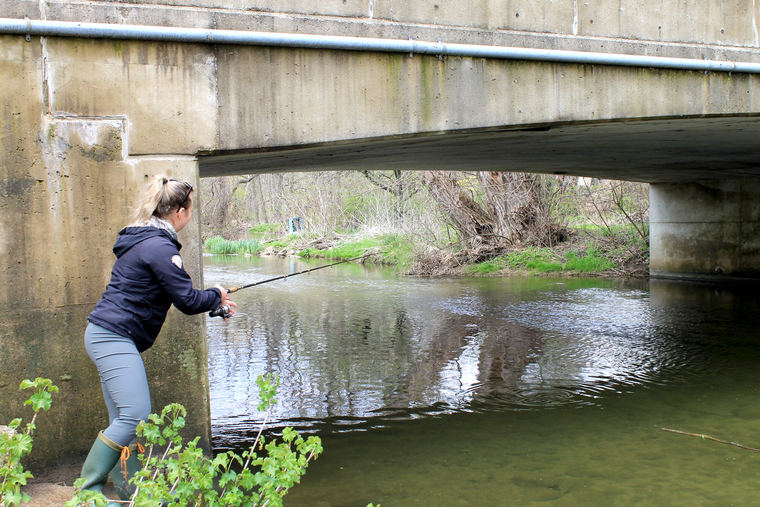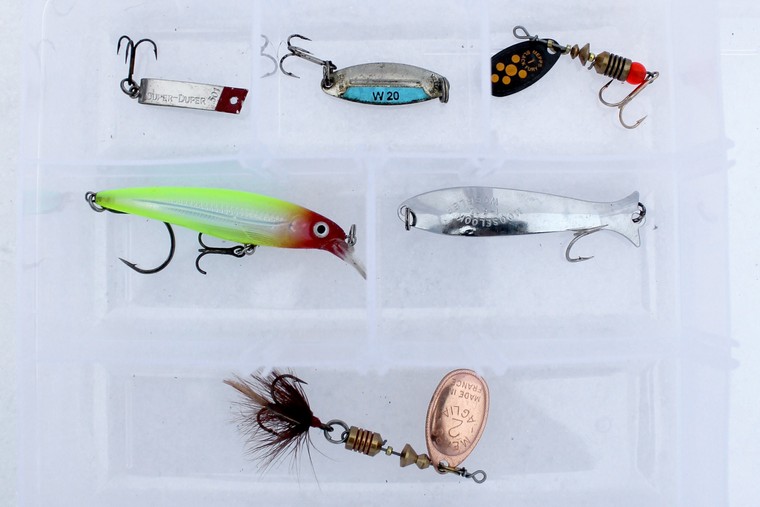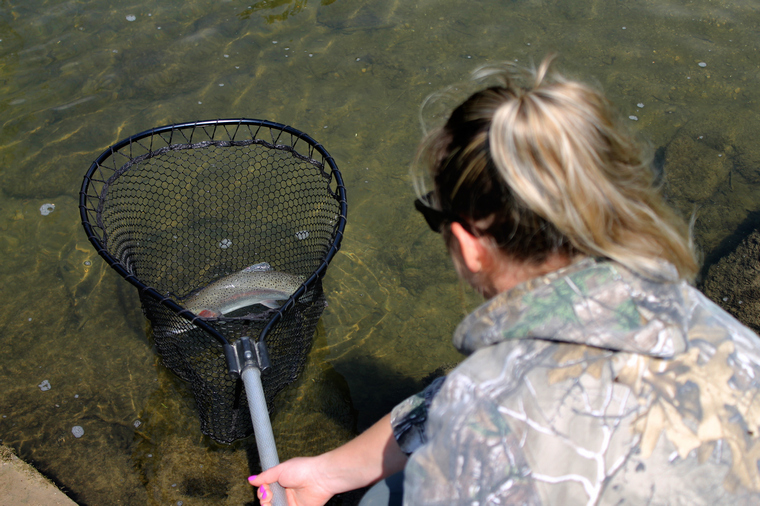For just one or two weeks after the season opener, you can find trout in Great Lakes tributaries, often many kilometres from rivermouths.
This isn’t a big secret — most anglers know that steelhead work their way into creeks, and, these small waterways experience significant fishing pressure. To catch creek fish, you need to be creative. While stealth is often a go-to strategy, there are important lure considerations as well.
Ontario is blessed with an abundance of creeks, but finding the right one for steelhead fishing can be difficult. If there hasn’t been significant rainfall, look for creeks with clear water. This often indicates the creek is spring-fed, meaning it’s colder — crucial for trout. If the water is murky, it’s likely warmer, and you’re less likely to find steelhead.
Stealth involves not only your approach to the fishing hole, but also how you present your bait. Trout are notoriously skittish, and a careless approach will spook them. Approach the water cautiously and cast from a distance. A precise cast is essential when casting lures like spinners or spoons.

Lure should match the situation. For example, I sometimes find trout so far into a culvert that casting becomes nearly impossible. In such cases, I set aside my small spoon or inline spinner and opt for a bobber or floating Rapala and float these further downstream.
I let the lure float downstream until it’s on the far side of the hole, then slowly work it back with a combination of pops and pauses. Trout almost always strike during the pause, so experimenting with the timing of your pauses can make all the difference.

There’s no single right way to catch steelhead. There are countless techniques, variations, and tricks to try. Don’t feel restricted if you aren’t using these specific lures — explore, adapt, and innovate. However, remember that precision and stealth are often the foundation of a successful day on the water.
In very shallow creeks, a float might only sit a few inches above the bait, spooking fish. I prefer using a floating Rapala or other thin, shallow-lipped floating bait, from two to five inches long.
Creek fishing comes with responsibility. Locating and targeting these fish can be incredibly rewarding, but it’s equally important to handle them with care. Using proper catch-and-release tools and practising proper fish-handling techniques helps ensure that steelhead return to these creeks year after year. Additionally, while wading through creeks, be mindful of egg beds that may still be present. Exercise caution to avoid disturbing these vital spawning areas, as they are crucial for sustaining the fish population.

Originally published in Ontario OUT of DOORS’ Fishing Annual 2025



Contact Information
PO Box 2800 / 4601 Guthrie Dr.
Peterborough, Ontario Canada K9J 8L5
Phone: 705-748-OFAH (6324)
Fax: 705-748-9577
Join Our Newsletter
Watch
Shop
Follow